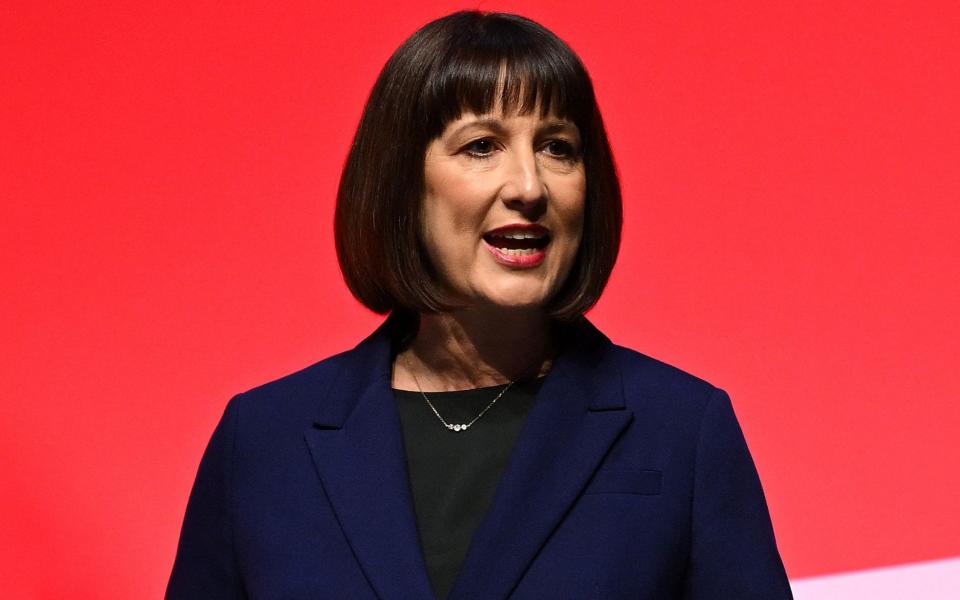
Rachel Reeves will be urged to plunder the pension savings of up to 6 million middle-class workers in plans presented by Treasury officials ahead of her first budget.
The Chancellor is expected to consider a proposal for a flat rate 30% tax credit for pensions – meaning higher rate payers will for the first time pay an effective tax charge of 10% on their pension contributions.
The plan would affect up to 6 million higher rate taxpayers and the wealthiest savers, costing the richest savers around £2,600.
Ms Reeves has spoken out in favor of limiting pension relief, but has since distanced herself from the proposals, insisting she has “no plans” to change the current regime.
Pension contributions are tax deductible. This means that basic rate payers will receive an exemption equal to 20% of their payments to waive income tax that would otherwise be due. Senior taxpayers – those earning more than £50,270 – will get a 40% relief, and most additional taxpayers earning more than £125,140 will get 45%.


These rules cost the exchequer more than £50 billion every year through income tax relief, corporation tax relief, zero tax on pension growth and the fact that employers do not have to pay national insurance on employer pension contributions.
The Treasury has long wanted to tax pension savings and has drawn up a detailed plan for a raid that has been presented to successive chancellors since the coalition government came to power in 2010.
Proposals on the table include fixed rates of 20% and 30%. Sources suggested a 30% rate would be more politically acceptable because it could be presented as a giveaway to millions of basic rate taxpayers, which essentially means their pensions are topped up by the government.
However, this would mean that higher and additional rate payers would face an effective surcharge of 10 or 15 percent.
Any change would spark outrage in the pensions sector and concerns that many savers would stop paying. the highest earners could end up being taxed twice on the same income because post-retirement withdrawals are also subject to income tax.
A flat rate of 30% would be the equivalent of a £2.7 billion tax increase, according to the Institute for Fiscal Studies (IFS). The policy would save the bottom 80% of earners around £230 a year, while the top 10% would see an average tax increase of just under £2,600 a year.
Limiting income tax relief to the basic rate would mean a tax increase of £15.1 billion, the IFS said – roughly the same as a 2p increase in the basic rate of income tax.


The think tank said this “substantial tax increase” would be borne almost exclusively by the top 20% of earners, with the top 10% taking an average hit of £4,300. The bottom 80 percent, which largely receive basic income tax relief on pension contributions, would see little to no change, the IFS said.
Sources familiar with the plans say moving to a 30% lump sum of upfront support could help ‘level out’ the savings landscape with more generous support for the majority of workers, who would benefit by hundreds of pounds every year .
In 2018, when Ms Reeves was chair of the Business Select Committee, she wrote a 66-page document outlining a series of tax reforms, including limiting exemptions on pensions. She said: ‘Forty percent of Britain’s wealth is in private pension funds. To combat this inequality, the higher pension contribution exemptions could be limited.”
Two years earlier, in 2016, she proposed setting the exemption at a flat rate of 33%. The IFS has said a rate of 32% would be roughly revenue neutral, although a freeze on personal allowances is expected to drag millions of people into higher tax brackets in coming years.
Experts say a 30% tax rate would force the Treasury Department to impose restrictions pension schemes with salary sacrificewhich currently provide a tax-efficient way for employers and employees to build a pension into the workplace.
The Treasury has also done detailed work on this proposal, which could raise up to £3 billion a year. It also carried out an analysis of the limitation of the exemption of employee and employer national insurance contributions.
However, Sir Steve Webb, former Pensions Secretary and partner at pensions consultant LCP, said it would discourage employers from “doing the right thing by penalizing employers who contribute generously to workplace pensions”.
Research by the London School of Economics also found that the generosity of employers’ contributions to workplace pension schemes was the biggest incentive for people to save, increasing the likelihood of someone saving for a pension by 71%.
Sir Steve added that extending the restrictions to defined benefit schemes – which provide a guaranteed retirement income based on career earnings – would be hugely complex.
This is because most contributions to these schemes are paid by the employer. For example, limiting the exemption to the basic rate would be the equivalent of a taxable benefit going to higher-rate taxpayers. This could result in huge tax burdens or lower pensions in the event of an immediate tax levy.
Sir Steve said: “Giving everyone the same rate of tax relief on their pension contributions may seem fair, but it would be extremely complex to implement this for the millions of workers in traditional salary-related pension schemes.
“The majority of contributions into such schemes come from employers and are made without any tax deductions. If higher earners were to lose the higher tax credit, they could face a tax surcharge not only on their personal contributions, but also on the contributions their employer pays directly into the scheme. This bill can be thousands of pounds per year in some cases.”
A Treasury spokesperson said: “We have set out the need for economic stability and we have started laying the foundations so we can grow our economy and keep taxes, inflation and mortgages as low as possible.”


